Sailing scenery photography captures the essence of the open sea, blending the beauty of nature with the elegance of sailing vessels. For photographers eager to craft stunning images that reflect both the motion and serenity of sailing, mastering the art requires a combination of technical skill and creative vision. Whether you’re a seasoned sailor or a hobbyist, understanding the best practices for capturing sail pictures and creating dynamic sailing scenes can elevate your work to new heights. This guide explores essential tips, locations, and techniques to help you create sailboat photography that stands out, ensuring your shots rival the most iconic yachting imagery.
Key Takeaways
– Conduct Extensive Research: Plan ahead to understand your destination’s geography, weather, and seasonal variations to maximize your photography potential.
– Capture Golden Hour Light: Utilize the magical light of the golden hour for dramatic silhouettes and vibrant colors in your sailing photos.
– Experiment with Composition: Play with perspective and framing to highlight your subject, using leading lines and foreground elements for depth and texture.
– Master Lighting and Shadows: Seek out soft, diffused light for a serene look or dramatic shadows that enhance your scenes.
– Stay Close to the Water: Capture reflections and details by shooting from a lower angle, emphasizing the grandeur of sails and the ocean’s vastness.
– Use a Tripod for Stability: Ensure sharp images even in rough conditions by stabilizing your camera with a tripod.
– Explore Unusual Angles: Break traditional compositions by shooting from unique perspectives, like looking up at the mast or down at the wake.
– Edit Thoughtfully: Enhance your photos through post-processing to bring out details and mood, using filters sparingly for creativity.
- Identify Ideal Locations: Look for destinations combining calm waters, scenic landscapes, abundant wildlife, and safety for both sailing and photography.
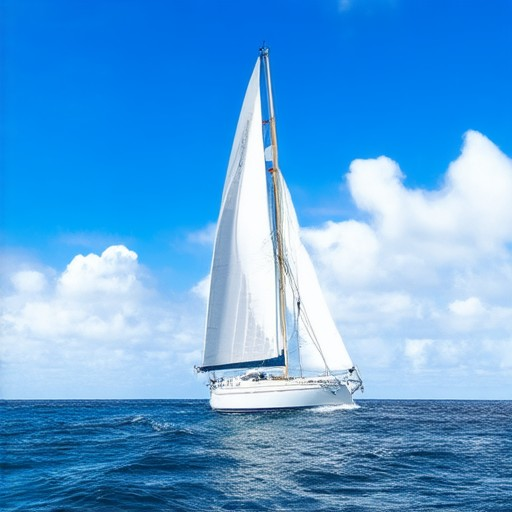
How to Capture the Best Sailing Scenery
Sailing photographers have a unique opportunity to capture the beauty of the open sea and its surroundings. Here are some expert tips to help you get the most out of your shots:
- Quality Gear is Key : Invest in a sturdy camera with a wide-angle lens. A tripod ensures stability, especially on moving boats. Consider using ND filters to control light exposure and capture dramatic skies.
- Golden Hours are Gold : Shoot during sunrise or sunset when the light is soft and warm, creating stunning silhouettes of sails and boats against the sky.
- Dynamic Compositions : Frame your shots to emphasize motion and action. Look for patterns in the water, such as waves or reflections, to add texture and interest to your photos.
- Focus on Details : Zoom in on small details like the rigging, the wake of the boat, or the interaction between the boat and its surroundings. These close-ups can add depth to your scenes.
- Consider the Environment : Choose locations with dramatic backgrounds, such as cliffs, lighthouses, or islands, to enhance your photos. Time your shots around local events or weather conditions like rainbows or sunsets.
- Edit Thoughtfully : Post-process your photos to enhance colors and contrast. Remove unwanted objects or people from the frame to keep the focus on the scenery.
By combining these techniques, you can create breathtaking sailing scenery that truly captures the essence of the open sea. Remember, patience and dedication are essential to perfecting your craft. Explore more tips and inspiration on our Sailing Photo Awards platform to take your photography to the next level!
Top Tips for Sailing Photographers to Capture Stunning Sailing Scenery
Capturing breathtaking sailing scenery requires a combination of skill, patience, and a keen eye for detail. Here are some expert tips to help you get the most out of your sailing photography:
- Golden Hour Lighting: The golden hours, typically around sunrise and sunset, provide soft, diffused light that enhances textures and creates dramatic shadows. These times are ideal for capturing the warmth and beauty of the sailing landscape.
- Leading Lines and Symmetry: Use the boat’s mast, rigging, and sails as leading lines to create a sense of motion and direction in your photos. Look for symmetrical compositions to add balance and harmony to your scenes.
- Perfect Timing: Wait for the perfect moment when the boat is about to tack or when the sails are fully extended. This can add dynamism and energy to your shots, making them more engaging.
- Unique Angles: Don’t be afraid to get low to the ground or climb high for a bird’s-eye view. Experiment with angles that highlight the boat’s motion, the play of light on the water, or the vastness of the horizon.
- Consider the Horizon: Include the horizon in your shots to add depth and a sense of scale. The horizon can also reflect the boat and sails, creating striking mirror images.
- Color and Contrast: Take advantage of the vibrant colors during golden hours and the contrasting tones of the ocean against the sky. Reflections on the water can add a touch of magic to your photos.
- Incorporate People: Include crew members or passengers in your shots to add a sense of scale and life to the scene. Pose them naturally or capture them interacting with the boat for a more engaging image.
- Post-Processing Magic: Use editing software to enhance your photos. Adjust white balance, color correction, and exposure to bring out details and ensure the colors pop. This can transform an average shot into a standout piece.
- Technical Setup: Use a tripod for stability, especially in rough conditions. Experiment with different lenses, such as wide-angle for capturing the expanse of the sea and telephoto for zooming in on details like the rigging or the boat’s wake.
- Know the Boat’s Movement: Pay attention to the boat’s movement and the direction of the wind. Anticipate the next move and capture the boat in mid-action for dynamic shots that showcase its power and grace.
By combining these tips with your own creativity and patience, you can create sailing photographs that truly capture the essence of the sport and the beauty of the open sea.

Where Are the Best Spots for Sailing Scenery Photography?
Sailing scenery photography offers a unique perspective to capture the beauty of the open sea, coastal landscapes, and maritime phenomena. Here are some of the world’s most iconic spots for sailing scenery photography:
- The Seychelles Islands
- Norway’s Fjords
- Patagonia, Chile
- The Galápagos Islands
- Sri Lanka’s Coastal Sceneries
- New Zealand’s Fiordland National Park
- Australia’s Great Barrier Reef
1. The Seychelles Islands
The Seychelles are renowned for their pristine beaches, crystal-clear waters, and vibrant marine life. Popular spots include the Shipwreck Anchorage near Mahe Island, where photographers can capture dramatic shipwreck scenes against stunning sunsets. The Boddam Beach offers unique rock formations and colorful underwater photography opportunities.
2. Norway’s Fjords
Norway’s fjords provide a dramatic backdrop for sailing photography, with towering cliffs, cascading waterfalls, and shimmering blue waters. The Geirangerfjord, a UNESCO World Heritage Site, is particularly popular for its breathtaking landscapes and the chance to witness the Northern Lights during winter months.
3. Patagonia, Chile
Patagonia’s rugged terrain and glaciers make it a haven for adventurous photographers. The Chilean fjords, including the Strait of Magellan, offer unique perspectives of icebergs calving into the sea. The region’s dramatic skies and changing light conditions enhance the visual experience.
4. The Galápagos Islands
Known for their rich wildlife, the Galápagos Islands provide endless opportunities to photograph exotic birds, marine iguanas, and sea lions. The islands’ diverse ecosystems and volcanic landscapes add complexity to the scenery, making them a must-visit for nature photographers.
5. Sri Lanka’s Coastal Sceneries
Sri Lanka’s coastline features lush tea plantations, golden sands, and ancient fishing villages. The area around Galle Fort offers a mix of colonial architecture and ocean vistas, while the island’s interior provides lush greenery and mountain backdrops for sailing photography.
6. New Zealand’s Fiordland National Park
Fiordland National Park in New Zealand is celebrated for its deep fjords and waterfalls. Sailing through Milford Sound, for example, allows photographers to capture the grandeur of the surrounding cliffs and waterways, often under dramatic lighting.
7. Australia’s Great Barrier Reef
The Great Barrier Reef, the world’s largest coral reef system, is a playground for photographers. Snorkeling and sailing around the reef offers vibrant coral gardens, tropical islands, and opportunities to document marine biodiversity.
Each of these destinations offers unique challenges and rewards for sailing scenery photographers. From capturing the essence of remote islands to exploring vast stretches of coastline, these locations provide a wealth of inspiration and subject matter for incredible photography.

What Are The Best Tips For Capturing Stunning Sailing Scenery Through Photography?
Plan Thoroughly
Before setting sail, conduct thorough research on your destination. Study the area’s geography, weather patterns, and seasonal changes. Consider the time of day for optimal lighting and the impact of tides on the landscape. Popular spots like the British Virgin Islands or Norway offer unique challenges and opportunities for photographers.
Choose the Right Time of Day
Capture the golden hour, typically 2-3 hours after sunrise or before sunset, when light is soft and dramatic. This time often produces stunning silhouettes and vibrant colors, perfect for sailing photos with rich contrast and depth.
Composition is Key
Experiment with perspective and framing to highlight the subject. Use leading lines to guide the viewer’s eye towards the horizon or the boat. Incorporate foreground elements like waves or rigging to add texture and interest to your shots.
Lighting and Shadows
Pay attention to shadows and how they complement your scene. Early morning shots can emphasize the drama of dawn, while late afternoon shoots might highlight the golden hues of the setting sun. Use diffused light for a softer effect or seek out dramatic cloud formations that add dynamic elements to your photos.
Stay Low to the Water
Get close to the water level to capture reflections and details. A lower angle often enhances the grandeur of the sails and the vastness of the ocean. This perspective can also emphasize the boat’s movement and interaction with the environment.
Use a Tripod
Stabilize your camera with a tripod to minimize vibrations and ensure sharpness, especially in rough conditions. This allows you to adjust settings quickly and maintain focus on moving subjects like the boat or waves.
Explore Unique Angles
Don’t stick to traditional compositions. Try shooting from unusual perspectives, like looking up at the mast or down at the wake of the boat. These angles can add a fresh twist to your sailing photos and make them stand out.
Edit Thoughtfully
Post-processing is essential for bringing out the best in your photos. Adjust exposure, color balance, and contrast to enhance the mood and detail. Use filters sparingly to maintain authenticity while adding a touch of creativity.
- Explore our complete guide to sailing photography
- Discover more photography resources and guides
- Visit our main website for exclusive content and updates
What Makes a Location Ideal for Sailing and Scenery Photography?
A location ideal for sailing and scenery photography combines several key elements to create an unforgettable experience. These factors include:
- Calm Waters:** The area must offer sheltered bays, calm seas, or protected harbors to ensure safe navigation and mirror-like reflections for photography.
- Scenic Landscapes:** Dramatic cliffs, lush forests, vibrant sunsets, or unique geological formations that provide diverse backdrops for photography.
- Abundance of Wildlife:** Opportunities to observe birds, marine life, or other animals that can serve as subjects or add to the overall experience.
- Safety and Navigation:** Safe harbors, clear navigation channels, and marked buoys to ensure ease of movement for boaters.
- Cultural Richness:** Proximity to historical sites, local markets, or cultural events that add depth to the journey and photography.
- Seasonal Highlights:** Unique features like the Northern Lights in winter or autumn foliage that enhance visual interest.
- Accessibility:** Balance between isolation and access to supplies, services, and emergency support for a comfortable stay.
These elements work together to create a setting where both the sailor and photographer can thrive, capturing stunning visuals and enjoying the journey.
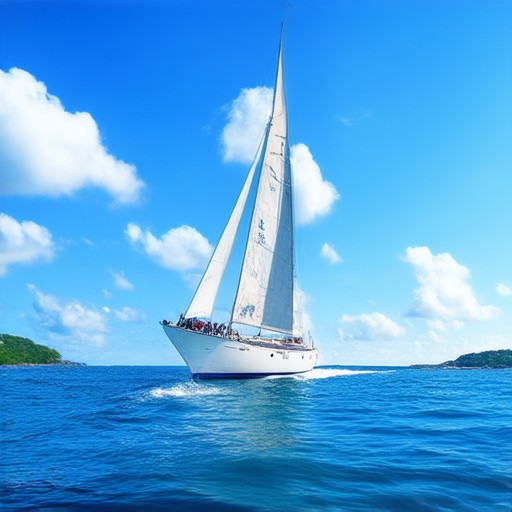
Factors Making a Location Ideal for Sailing and Scenery Photography
The ideal location for combining sailing and scenery photography must balance the best conditions for both activities. Here are the key factors:
- Weather and Climate : Stable weather conditions with consistent wind patterns, such as the Caribbean or Mediterranean, provide ideal sailing conditions and clear skies perfect for photography.
- Landscape Diversity : Dramatic coastlines, lush greenery, and unique geological formations, like the Canary Islands or Hawaii, offer stunning backdrops for photos.
- Water Quality and Types : Calm bays and sheltered harbors are great for sailing, while open waters, like the Maldives or Greek Isles, offer dynamic wave conditions for photography.
- Wildlife and Marine Life : Abundant wildlife, such as bird colonies and marine ecosystems, attract photographers and sailors alike, as seen in the Galápagos Islands or Seychelles.
- Cultural and Historical Significance : Rich history and culture, like Italy’s coastal ports, provide architectural and cultural subjects for photography while adding depth to the sailing experience.
- Safety and Navigation : Clear navigational markers and safe harbors, found in regions like the US Virgin Islands or New Zealand, ensure confident navigation and a secure environment.
- Professional Resources : Access to sailing schools and photography workshops enhances skills, making locations like the British Virgin Islands or Australia appealing.
Combining these elements creates a location that caters to both sailing enthusiasts and photography buffs, offering unforgettable experiences and scenic beauty.
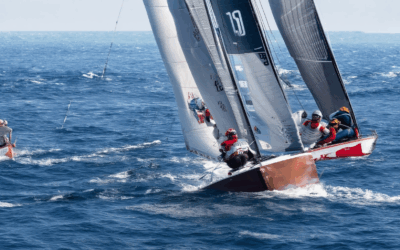
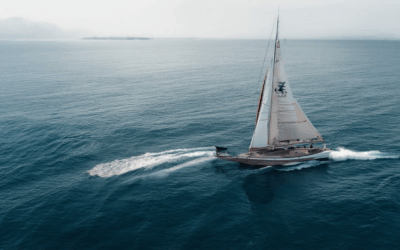
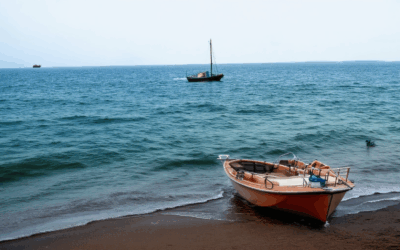
0 Comments